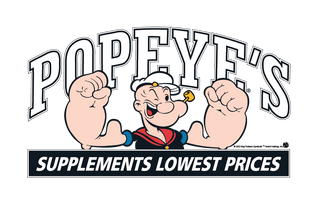
Creatine and sports

By : Team Popeye's
Now that we’ve covered the science of what creatine is and how it works in your body on a cellular level, let’s look at what creatine does for you as someone looking to train and perform! Creatine is one of the most popular sports performance supplements out there, so it might be worth our time to look at what the research says about how it might help you do more!
With the mechanisms explained in our previous post (if you missed it, check it out here), creatine works to extend our energy supply that much more when our cardiovascular system is under heavy-duty stress. Specifically, when the work we do is Anaerobic (exercises where no oxygen can get to your muscles). This means activities like sprinting, weightlifting, climbing, or anything else with short bursts of high intensity get the most benefit from using creatine. Those who do more endurance-based events like marathons, or 2–3-hour runs might see less benefit from it, as these are Aerobic exercises (exercises where your body can still get oxygen to your muscles).
This isn’t to say that creatine isn’t helpful – these events still have portions where you might have to give a bit more gas, in which case, creatine helps out a lot, but it might be lower priority on your supplement shopping list (instead, electrolytes and beta-alanine are your priority supplements)!
How do you know if your training and/or sport is anaerobic, and therefore can benefit most from creatine? Simple, ask yourself if you regularly have periods where you can exert yourself for only 30-60 seconds before needing to reduce intensity or rest. If yes, that’s anaerobic work, and creatine will help you out! Using creatine for these kinds of training will help you push out a few more reps or exert that much more effort. Over time, this leads to increased gains in your training, and improved performance.

For example, a 1999 study in the journal Medicine and Science in Sports and Exercise tested 19 men who were already used to resistance training to see the effects of creatine vs. a placebo. These men were randomly assigned in a double-blind manner (the gold standard for experiment design) and were given either creatine, or a placebo for 12 weeks of training.
At the end of the study period, gains in body mass, and fat-free mass were greater in the creatine group than the placebo group. This tells us that the creatine group likely saw more muscle development than the placebo group in the 12-week period. Strength also developed more in the creatine group than the placebo group, with greater increases in bench press and squat weights. They also checked muscle creatine content to be sure that rises in creatine levels are actually a possible cause to these differences in results and saw that muscle creatine content we elevated in the creatine group, while being the same as at the beginning of the 12-week period for the placebo group. No negative side effects from the supplement group were reported in this study.
To properly take creatine is a simple matter – 5g per day, best accompanied by carbs in the form of a sugar drink, or a carb product. Be careful, your sugar drink can’t be juice though! For reasons we’ll get into in our next blog post!





